Unsafe sanitation continues to be a massive problem globally and is becoming more urgent with growing water scarcity and rapid urbanisation. Around 4.5 billion people face unsafe sanitation facilities and services, and COVID-19 exposed several new faultlines and reinforced the urgent need for action.
To be effective, sanitation must be carefully managed at all stages, from the point that waste is collected and contained to how it is transported and treated. If there are gaps or breaks at any stage, then harmful human waste flows into surface waters and onto fields in areas where children play and people of all ages live, eat, drink and bathe.
A centralised approach has been the conventional wastewater management strategy applied across the world, and is the de facto gold standard for toilets. It is typified by a design with a network of sewers linked to communities and transporting large volumes of wastewater to a collection, treatment and disposal point. Water – an essential component of this approach – is used to transport human excreta from one point to the next.
Developed countries have followed this approach to meet their sanitation needs, with conventional waterborne systems implemented and continuously improved to achieve increasingly stringent control and pollution regulations, to minimise overloading of the natural environment.
Developing country challenges
While this strategy has led to a significant reduction in outbreaks of waterborne disease, developing countries struggle to implement such systems, because of a myriad of factors associated with financing, affordability and revenue. This has resulted in a heavy reliance on onsite systems. These systems are typified by lower costs – between 5-50% lower than centralised sewered systems – but are associated with lower user acceptance and challenges associated with collecting and removing faecal sludge – the human-origin waste that collects within these systems. Such systems, therefore, pose a different set of technical challenges related to their management – something that is often overlooked.
At the same time, technology advances in conventional sanitation come at a significant cost and energy requirement, with climate variability and water security putting added pressure on resources available for flushing and transporting human wastes.
As well as these considerations, the current approaches used for sanitation – either in the form of waterborne sanitation or onsite sanitation – are linear in design. It started with the removal of waste of faecal origin from urban cities without any treatment, and progressed to basic treatment and dilution strategies and now, in developed countries, to more efficient systems to meet increasing environmental and pollution control standards. Traditionally, very little of what is in the wastewater has been recovered, recycled or reused.
Thus, there remains no single solution to good sanitation, with toilets being but one part of the sanitation solution chain. So, to meet the needs of those without toilets, we need to rethink toilets and rethink how to provide sanitation as a service in new, adaptable and customer-centric ways. Specifically, in developing countries, it will require new and innovative technologies that are aspirational, practical, cost-effective, and replicable on a large scale, while stimulating a circular economy pathway that also fuels economic growth, new jobs, and expanded entrepreneurial opportunities.
Furthermore, this should respond to the need for green solutions that are climate friendly and contribute to water and environmental security. Complex and changing waste streams in the world and extreme water/energy shortages warrant this transition.
Changing the sanitation pathway
This all provides a context to consider progress on a very novel and bold attempt to change the sanitation pathway and future in South Africa. Historical inequities have resulted in large parts of the South African population having inadequate access to sanitation facilities and services. South Africa’s vision for 2030 is to provide universal access to piped water and access to hygienic toilets, thereby contributing to a healthy population and environment, which will ultimately lead to a stronger economy.
South Africa has acted purposefully to attain this goal through government-sponsored programmes that have been aiming to provide basic sanitation services to all, including poor and unserved communities. Our national percentage of households with access to improved sanitation facilities increased from 62% in 2002 to 80% in 2015, reaffirming government commitment to provide access to this basic human right.
This journey has not been easy. Though significant progress has been made since the democratic shift of 1994, many new challenges have emerged, with a growing aspiration for better solutions. The binary model of the gold standard in the form of a full-flush toilet versus the hole standard in the form of pit latrines, for rich and poor areas respectively, has not closed the gap, but has raised a myriad of new operational challenges. Compounding this is the threat of water scarcity and that universal access to waterborne sanitation may not be realised because of prohibitive costs and the lack of availability of water.
“WE NEED TO RETHINK TOILETS AND RETHINK HOW TO PROVIDE SANITATION AS A SERVICE IN NEW, ADAPTABLE AND CUSTOMER-CENTRIC WAYS”
This was a clarion call for serious sanitation transformation in the sector to tackle the binary technology problem. The response is led by South Africa’s Water Research Commission (WRC), through its national initiative SaNiTi – the Sanitation Transformational Initiative – which has the objective of mainstreaming non-sewered sanitation (NSS) through a very different platform, that of a new Sanitation Industrial Pathway. The SaNiTi strategy incorporates elements of behaviour change, industrial development, policy development for NSS, technology standards and regulations, technology testbeds, and a sanitation academy that builds the next cohort of skills and artisans required to service this new frontier. The outcome will result in:
- NSS or off-the-grid sanitation that meets user needs and expectations
- Application of circular economy principles in which products in the value chain are recycled or reused, with the addition of other revenue streams
- Establishing market needs and demands
- Presenting an R&D pathway to achieve technical, policy and procurement targets in line with our vision
- Creating a sanitation manufacturing industry with new roles and employment.
“THE APPROACH OFFERS ENDLESS OPPORTUNITIES FOR STIMULATING THE DEVELOPMENT OF A NEW INDUSTRY THAT WILL POTENTIALLY MEET SEVERAL NATIONAL OBJECTIVES OF JOB CREATION”
With this, South Africa aims to transform the sanitation environment towards a smart sanitation technology solutions environment that will see sanitation going off the grid, adopting a circular economy approach to this new sanitation services market. In establishing this new market, government will have to play a leadership role as the enabler and facilitator. It is also about transforming a very entrenched public supply model, which will have to evolve if we are to be successful.
The approach offers endless opportunities for stimulating the development of a new industry that will potentially meet several national objectives of job creation, small, medium and micro enterprise (SMME) development, macro enterprise development, and so on, while turning this challenge into an opportunity to implement a circular economy approach for sanitation.
The following is already in progress:
Policy: The notion of this new sanitation transformative environment has been entrenched in the national Water Policy and Master Plan. This formally sets government impetus and commitment in this direction.
Industry: The Department of Trade and Industry (DTI), Department of Science and Innovation (DSI) and WRC have established an industrial platform for new off-grid sanitation, included in a DTI policy of 2017. This is a strong signal for transforming the sanitation space towards a viable industrial and innovation base for solutions and production. Localisation and manufacturing also stimulate and create a new industry with products and services and meaningful new jobs.
Standards: Working with the South African Bureau of Standards (SABS), the ISO 30500 standard on non-sewered sanitation has been adopted. This is a very important element in this new sanitation economy. Products and innovations must subscribe to national standards and quality.
Regulations: While the Department of Water and Sanitation is working on new regulations, one of the key instruments undergoing revision is the National Building Regulations, to include the new off-grid sanitation solutions. This adds the stimulus for both the state and public institutions to ensure quick uptake of solutions.
Demonstration: A dedicated national programme in the form of the South African Sanitation Enterprise Programme (SASTEP), which supports entry into the market.
SASTEP
The SASTEP programme is the flagship response and initiative of WRC and DSI that, with support from the Bill & Melinda Gates Foundation, aims to stimulate this new NSS industrial pathway. This programme focuses on working with relevant public sector partners, DTI, Industrial Development Corporation, potential private sector supply chain partners, and localisation teams to strengthen the manufacturing and service base
that will be required to support the next generation sanitation technologies sustainably. In addition, it will support appropriate sanitation technologies towards commercialisation, localisation and demonstration.
Through these processes, it will empower utilities to offer more aspirational sanitation solutions via smart services offerings, which will lead to behaviour change and sustainability. For South Africa, it will accelerate access to sanitation towards meeting the Sustainable Development Goals (SDGs) and in doing so build a more robust and sustainable operations and maintenance regime. It is also delivering emancipation from the dark hole in the ground, building greater equity and dignity.
All of this to date is an ambitious attempt to disrupt and transform South Africa’s sanitation future and, it is hoped, that of many cities around the world. I believe that NSS will be the new gold standard in the near future, which will afford universal access to dignified sanitation. While closing the sanitation gap, it will further benefit by saving nearly 50% of freshwater use and transforming pollutant pathways to valorisation of human waste, while establishing new utility management and processes. This means evolving away from pure hardcore engineering and asset management towards managing and regulating several supply chains. This transformation will embed a new market for sanitation and meet several of the SDG goals. •
Jay Bhagwan is Executive Manager at South Africa’s Water Research Commission, which is this year celebrating its 50th anniversary. He manages WRC’s Key Strategic Area of Water Use, Wastewater Resources and Sanitation Futures, and is Chair of the IWA Specialist Group on Non-Sewered Sanitation.
Main source to this article: https://www.thesourcemagazine.org/south-africas-lead-on-mainstreaming-non-sewered-sanitation/



